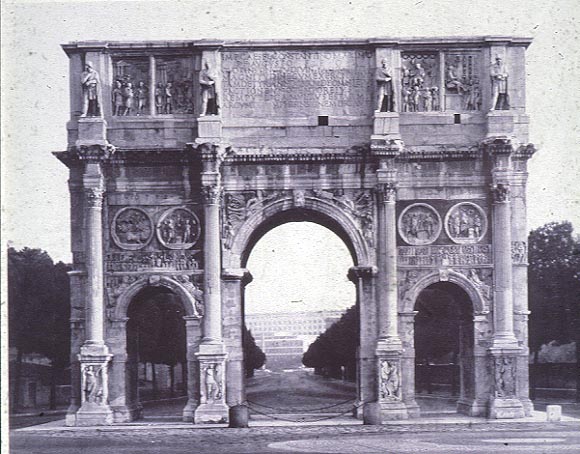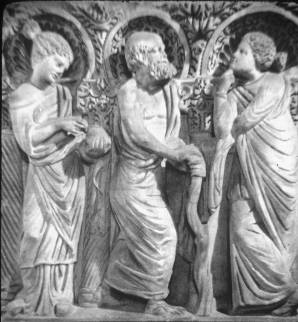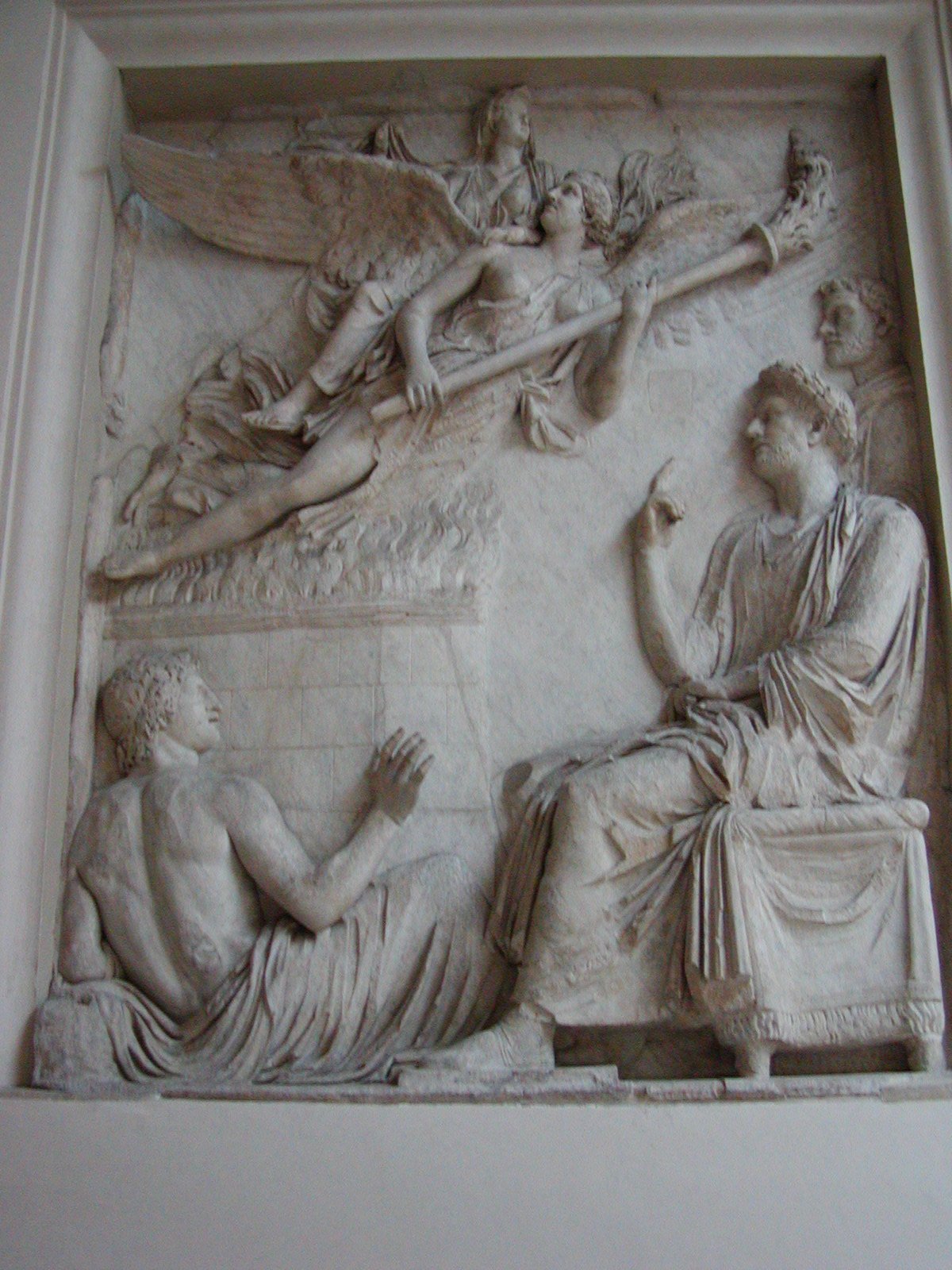Slide 1: Forum of Augustus, Rome
Forum of Augustus, area complex: 125 x 118 meters, height of forum walls: 33 meters
- 42 BC – Battle of Filippi and vow by Octavian to erect the temple at Mars Ultor;
- 27 BC — Octavian receives the title of ‘Augustus‘;
- August 1st 2 B.C. — Inauguration of incomplete Forum;
- 14 — Augustus dies;
- 19 — Arches in honor of Germania and Druso minor
The rectangular piazza has long deep porticos with a surface that widens into large semicircular exedras. Porticos and exedras included columns, semi – columns, and pavements in colored marble, and were adorned with statues; on their attic ran a decoration of female figures (Caryatids) and clypeus.
At the end of the piazza was the Temple, dedicated to Mars Ultor – a large structure in white marble with eight columns in front and seven along the sides.
The internal part was richly decorated and ended with an apse holding worship statues dedicated to Mars and Venus.
On the sides of the Temple were two paved ways that finish with stairways that surpass the height of the exterior. Both lead to two entrances, one with three arches and the other with one, the so- called Arch of Pantani. After the death of Augustus, two monumental arches were added at the bottom of the stairways, dedicated to Germania and Druso Minor.
Slide 2: ‘Prima Porta’ statue of Augustus
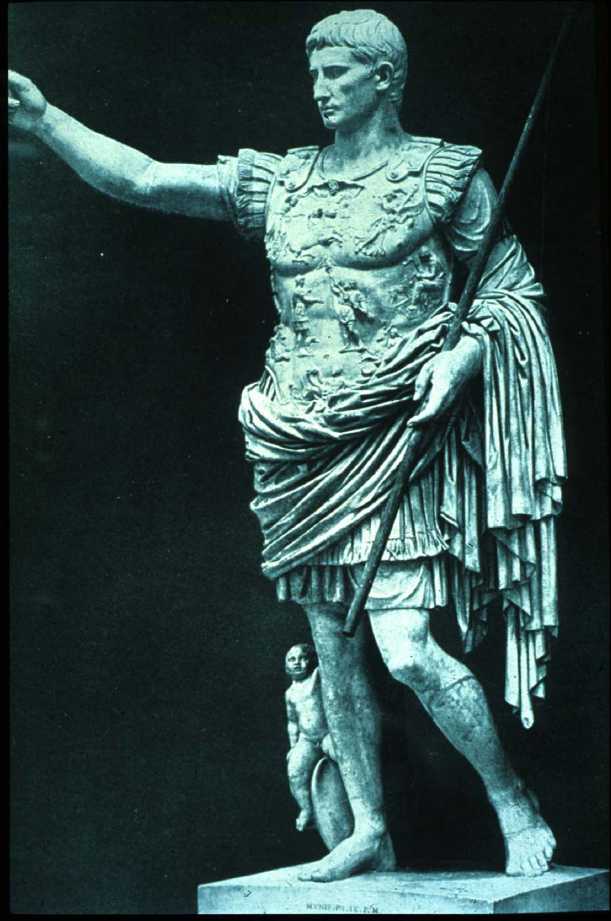
Slide 3: Ara Pacis (Altar of Peace) Rome 13-9BC

Slide 4: Arch of Titus, Rome c.80 AD
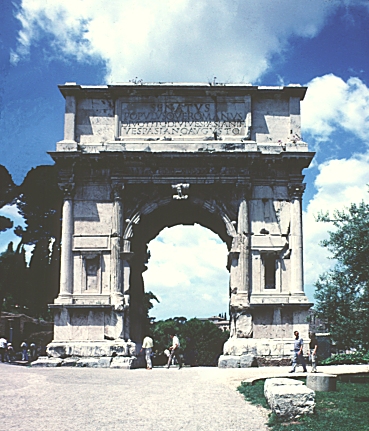
Slide 5: Arch of Trajan, Benevento

Slide 6: Arch of Septimius Severus, Rome
The Arch of Septimius Severus (Arcus Septimii Severi) is a triumphal arch, erected in 203 CE to celebrate the victories of emperor Septimius Severus and his sons Caracalla and Geta in the wars against the Parthians and the Osroeni in 195 CE and 197 CE. It is located in the Forum Romanum between the Curia and the Rostra. It spans the Via Sacra on the route of the triumphal processions just before the ascent of the Capitoline Hill towards the Temple of Jupiter Capitolinus.
Slide 7: Column of Trajan, in Forum of Trajan, Rome 113 AD

Slide 8: ‘Adlocutio’ of Hadrian (from Arco di Portogallo)(image not found)
Slide 9: Hadrian adopting Antoninus Pius(image not found)
Slide 10: Arch of the Argentarii 204 AD

Slide 11: Base of Column of Antoninus Pius 161 AD
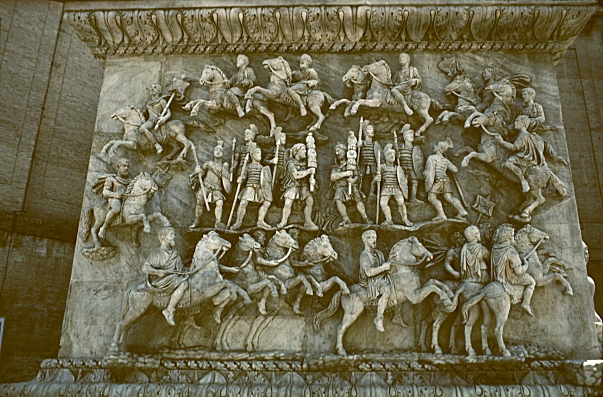
Tombs and Sarcophagi
Slide 12: Pyramid of G.Cestius 12 BC

Slide 13: Tomb of Eurysacis, Rome late Istc BC

Slide 14: Mausolea of Augustus

Slide 15: Mausolea of Hadrian

Slide 16: Columbanum in via Appia(image not found)
Slide 17: Sepulchral figures of Gratidius and Gratidia Libanus

Slide 18: Reliefs from the tomb of the Haterii late 1 stc AD
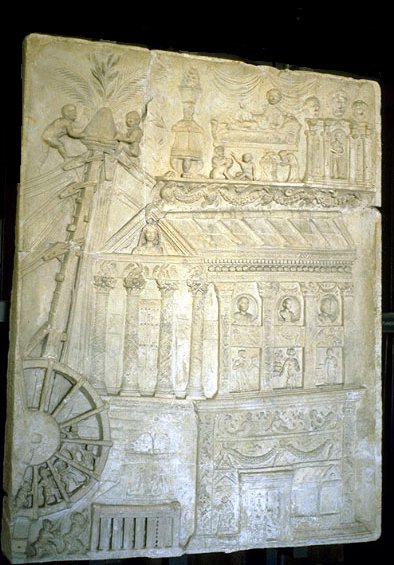
Slide 19: Alexander Sarcophagus (Istanbul)

Slide 20: Sarcophagus of mourning women (Istanbul)
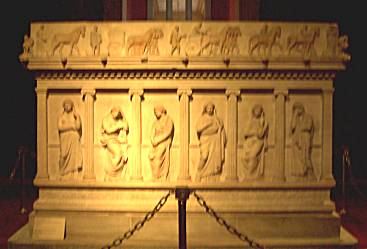
Slide 21: Etruscan sarcophagus (Volterra) mid-2ndc BC
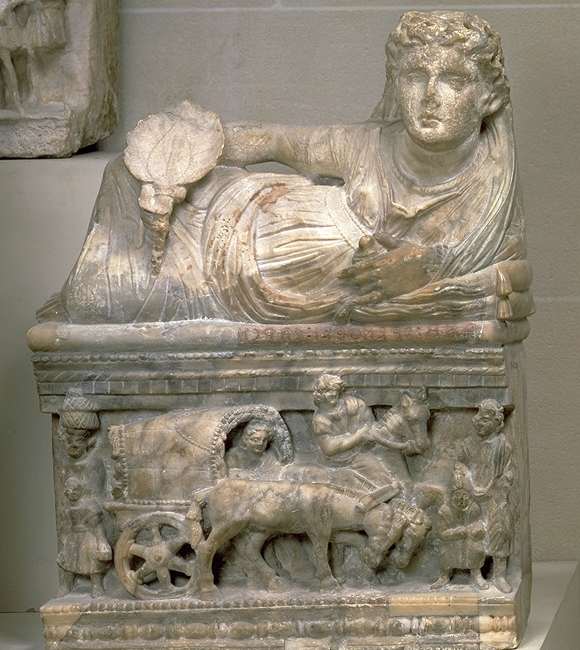
Cinerary urn, Volterra, alabaster, height overall 84 cm
As of the second half of the 4, the workshops of Volterra produced a new type of cinerary urn. The receptacle is usually decorated with a mythological or funerary scene carved in high relief. This one shows the deceased on the way to the hereafter, aboard a covered chariot drawn by mules (the carpentum, of Gallic origin), accompanied by a horseman and servants. This motif, which owes nothing to Greek art, is treated with the spontaneity and flavour of a scene from everyday life. The lid bears a likeness of the deceased, reclining in the attitude of a banqueter: here a young woman wearing her jewellery, holding a fan in her right hand, and in her left hand a pomegranate, symbol of immortality. The sculptor here employs a symbolic language that would later become one of the components of Roman art, the meaningful element being privileged to the detriment of formal perfection, the head at the expense of the rest of the body, the detail at the expense of the whole.
Slide 22: Asiatic sarcophagus (Louvre) late 2ndc AD
Slide 23: Asiatic sarcophagus (Melfl) 2ndc AD
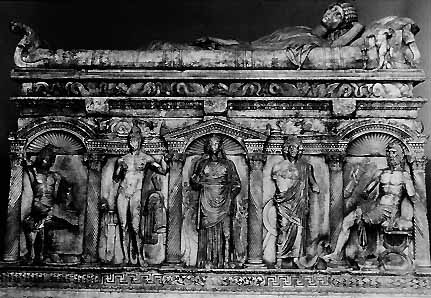
Slide 24: Sarcophagus (Florence) 2nd/3rdc AD(image not found)
Slide 25: Hercules sarcophagus (Borghese museum, Rome) 2ndc AD(image not found)
Slide 26: Sarcophagus from Velletn mid-2ndcAD(image not found)
Slide 27: ‘Field Marshall’ sarcophagus (Mantua)(image not found)
Slide 28: Battle sarcophagus (Rome)(image not found)
Portraits
Slide 29: Pericles
The Olympian
(495 – 429 B.C.)
Slide 30: Alexander(image not found)
Slide 31: Republican portraits(image not found)
Slide 32: Roman holding portraits of his ancestors (Rome) Istc BC(image not found)
Slide 33: Roman General (Chiete)(image not found)
Slide 34: Statue of Aulus Metellus (Florence) 1st Century BC(image not found)
Slide 35: Cicero
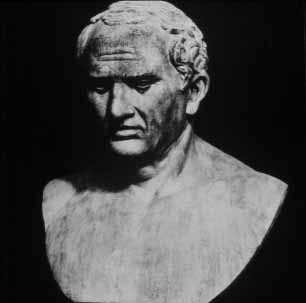
Slide 36: Pompey

Slide 37: Augustus

Slide 38: Augustus as Pontifex Maximus
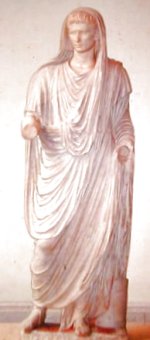
Slide 39: Tiberius

Slide 40: Nero

Slide 41: Vespasian(image not found)
Slide 42: Trajan
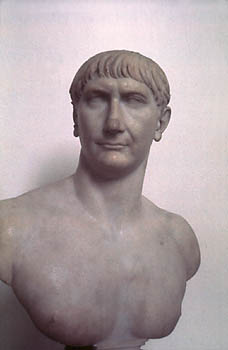
Slide 44: Woman of Flavian period

Slide 45: Wife of Septimius Severus

Slide 46: Septimius Severus

Slide 47: Marcus Aurelius

Slide 48: Arch of Constantine 312AD
